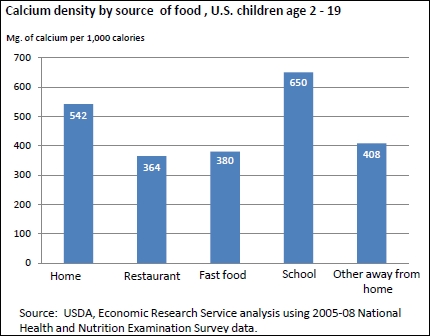School meals have highest calcium density
- by Economic Research Service
- 5/18/2012

Intake data for U.S. children age 2-19 from the 2005-08 National Health and Nutrition Examination Survey (NHANES) reveal that school-provided breakfasts and lunches, in which milk is a staple, are richer in calcium than foods eaten at home and foods from restaurants with wait staff, fast food places, and other away from home eating places. School foods contained an average of 650 mg. of calcium per 1,000 calories, compared with 542 mg. in home foods and lesser amounts in the other away from home sources. Intakes of over 7,000 foods reported by NHANES participants were converted into nutrient intakes using USDA's nutrient database. School foods were also found to be denser in fiber than foods from all other sources. The data in this chart are from the Food and Nutrient Intake Tables in the Diet Quality & Nutrition topic on the ERS website, updated June 15, 2011.

